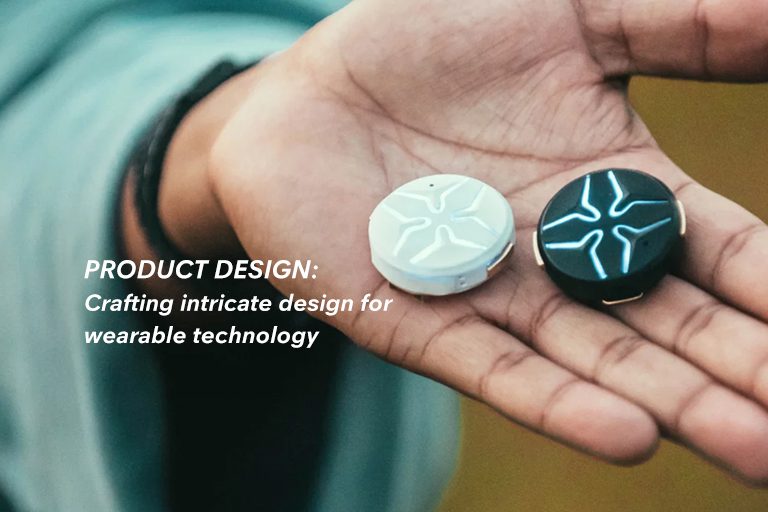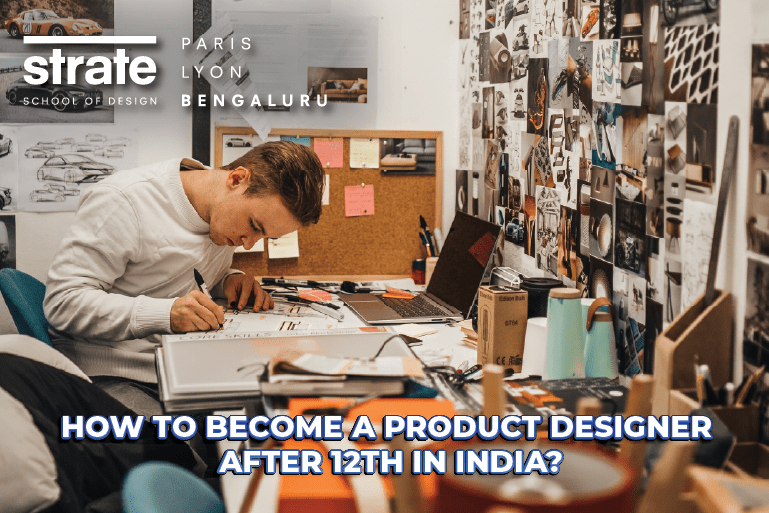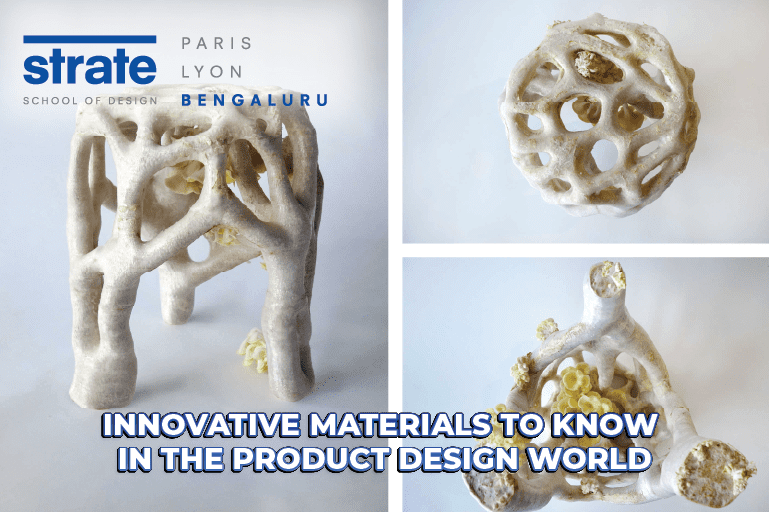We have a million wearable devices in the market today that range from watches, wristbands, glasses, earphones, rings and more are on their way. These are designed for specific tasks ranging from medical purposes that include monitoring range of motion, steps, sleep cycles to being used in the sports sector to monitor performance, speed, pitch conditions and more.
As a product designer in the wearable technology segment one may be presented with a unique set of challenges that includes to work around smaller screen size leading to less information density and a limited battery life as a few examples. All this has to work while the user is in motion and is connected to the application on this mobile device. For a designer this means working considering the following:
A. Size and form factor
Wearable means the device is designed for the user to wear. Designers must ensure the product is compact, easy to carry, lightweight so as it is comfortable to wear for a long period of time. A bulky device will take away the intention of the product while a lightweight device can aid in the user realizing the benefits of it and use more often with peace of mind.
Also read: Nike’s design innovation strategy
B. User Interface
Simple. Clear. Concise.
The best user interface is no interface – the saying certainly holds true with wearable devices. The UX/UI for wearables should utilize not simple touch, but also sound and vibrational commands. Voice search has shown year on year growth especially in Gen Z and is only bound to become the most prominent way of search.
Design for wearable UX/UI should consider voice input to help users compose text messages, schedule events, notify users via vibrations for incoming text, schedules and more. Text display should be kept crisp, clear, and concise.
C. Battery life
Our world today has several climate tech start-ups working to empower products and brands to become less dependent on our planet’s limited energy resources and empower them with concentrated solar solutions and other energy management options.
For wearable devices that have a limited battery life, an alternate energy option which is more energy efficient should be kept in mind when designing the product.
Also read: Strate x Tata Motors partnership
D. Durability
Daily wear and tear should be considered when designing for wearables. Humans produce sweat, use water resources, and may encounter minor incidents or accidents that will expose the wearable device to damage. The design should be able to withstand extreme weather conditions and still offer correct information, be water-resistant/ waterproof up to a certain meter of exposure to water, fire-resistant to a certain degree of temperature and so on.
E. Connectivity and ecosystem
Interaction with other devices is crucial and hence the design of wearables should not be thought of in isolation of other devices. In our world filled with millions of applications and devices, the design should be such that it helps a user to connect to a smartphone or other device with ease. It’s vital to comprehend a user’s digital ecosystem and use the help of the device to make this ecosystem function better.
A seamless experience requires the device to connect easily with users’ other devices to meet all his/ her needs.
F. Security and privacy.
Our hyper connected digital world is collecting our personal data more often that we are aware of or pay attention to. In wearable design, one must consider security and privacy features to protect a user’s data.
Also read: Multi-sensory typography: Engaging different sense with words
Wearable devices can monitor and display rather personal information like private chats, health data in plain sight. Design must consider the way the device is facing, for example for a wristwatch the more inward facing, it may allow for more personal information to display and a blank screen as default setting when facing outward. Another option could be to alert the user before displaying a personal chat.
For security reasons, there must be a lock in place that has proven to work after multiple testing and from privacy concerns, devices should be designed from a perspective that offers a clear and transparent understanding on how personal data is collected, stored, and used.
G. Customizability
Emerging technologies and interaction with digital applications and devices are all collectively able to now offer users complete control of their personal space with a series of customized commands.
When it comes to designing for wearables, designers must consider how this integration comes together in a device on a consumer’s hand. They should be able to adapt and customize the device’s usability to make it more inclusive of a user’s needs. This could mean connecting with other applications with the household, to making connecting more health based analytical apps as per a user’s need to the same device and much more.
H. Accessibility
Designing for accessibility is a key focal point in the design sector and wearable technology is a blessing for people with various other forms of abilities and disabilities. While only a few wearable designs are working on accessibility today, the aim for most designers should be to offer accessibility and inclusivity in their design for all. This involves working with available research or a team of scientists, researchers and designers who are making informed decisions based on the needs, preferences, choices, issues, experiences and expectations of persons with different abilities and disabilities.
Also interesting to read: Humanity Centric design and why it matters
J. User-testing
A great design knows what its users want and most importantly – do not want. And this requires designers to test their products with an understanding of what issues have come up, identify the issues, segment them into sections and resolve them before the actual product launch.
User testing is an essential tool for designers to understand how a user reacts to the design, form and shape, how comfortable the user is, how they react to the user experience and what irks the user that needs to be fixed.
Wearable design should be able to empower the user to perform the activity with ease and a quick pace. Acting as a friend to the users aiding them in their daily tasks and offering information crucial for the user to make informed decisions for example in case of health monitoring applications, a user can learn about their daily steps and make the decision to walk more to complete their targeted steps for the day.
Stay tuned for part of what to keep in mind when designing for wearable devices.
Also read: e-bike gadgets and accessories






Want to Become a Designer ?
Strate is a unique design school that nurtures your talents as a designer by offering state-of-the art designing courses in Bangalore.
Join Strate